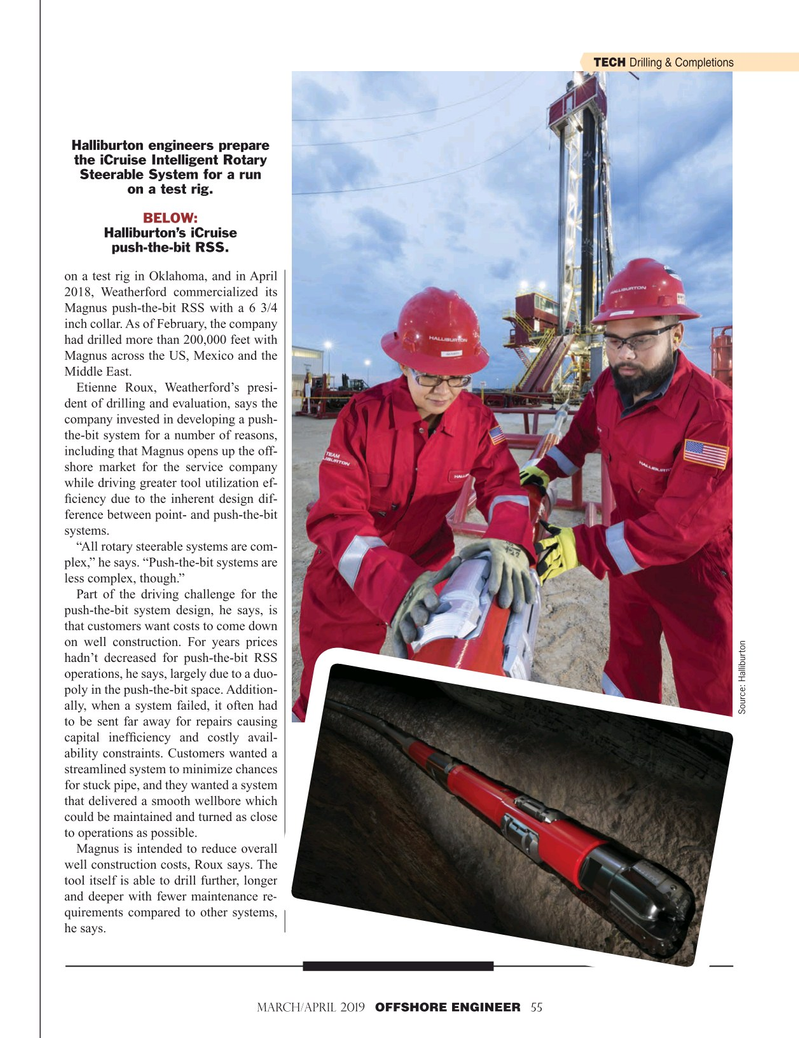
Page 55: of Offshore Engineer Magazine (Mar/Apr 2019)
Deepwater: The Big New Horizon
Read this page in Pdf, Flash or Html5 edition of Mar/Apr 2019 Offshore Engineer Magazine
TECH Drilling & Completions
Halliburton engineers prepare the iCruise Intelligent Rotary
Steerable System for a run on a test rig.
BELOW:
Halliburton’s iCruise push-the-bit RSS.
on a test rig in Oklahoma, and in April 2018, Weatherford commercialized its
Magnus push-the-bit RSS with a 6 3/4 inch collar. As of February, the company had drilled more than 200,000 feet with
Magnus across the US, Mexico and the
Middle East.
Etienne Roux, Weatherford’s presi- dent of drilling and evaluation, says the company invested in developing a push- the-bit system for a number of reasons, including that Magnus opens up the off- shore market for the service company while driving greater tool utilization ef- ? ciency due to the inherent design dif- ference between point- and push-the-bit systems.
“All rotary steerable systems are com- plex,” he says. “Push-the-bit systems are less complex, though.”
Part of the driving challenge for the push-the-bit system design, he says, is that customers want costs to come down on well construction. For years prices hadn’t decreased for push-the-bit RSS operations, he says, largely due to a duo- poly in the push-the-bit space. Addition- ally, when a system failed, it often had
Source: Halliburton to be sent far away for repairs causing capital inef? ciency and costly avail- ability constraints. Customers wanted a streamlined system to minimize chances for stuck pipe, and they wanted a system that delivered a smooth wellbore which could be maintained and turned as close to operations as possible.
Magnus is intended to reduce overall well construction costs, Roux says. The tool itself is able to drill further, longer and deeper with fewer maintenance re- quirements compared to other systems, he says.
MARCH/aPRIL 2019 OFFSHORE ENGINEER 55 50-64 OE 2019.indd 55 4/15/2019 11:53:17 AM

 54
54

 56
56